Sea-Doo Model Reference: 1989 - 2023
1989 1990 1991 1992 1993 1994 1995
1996 1997 1998 1999 2000 2001 2002
2003 2004 2005 2006 2007 2008 2009
2010 2011 2012 2013 2014 2015 2016
2017 2018 2019 2020 2021 2022 2023
1989 Sea-Doo Models
A new hull and top cap design was introduced in the SP. The new SP design provided for engine, electrical system access, and propulsion access under the seat. The SP was powered by a 587 Rotax engine painted yellow.
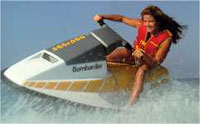
1990 Sea-Doo Models
Sea-Doo started production of their first three-passenger model branded GT. While Sea-Doo advertised this model as a three-passenger, that claim was a bit of a stretch as it took delicate balance for three passengers to stay on the ski at slow speed. Stability with three passengers was challenging, to say the least, but made for a lot of cooling off time in the water. The GT was a smooth bottom hull design that provided minimal holding in hard turns. If you liked to do spins, this was the ski for you. The SP introduced in 1989 remained the same in 1990. Both the 1990 GT and SP were powered by a single-carb 587 Rotax engine. The GT model also included reverse, a first for SeaDoo.
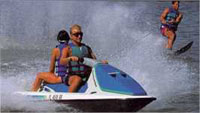
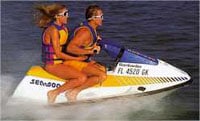
1991 Sea-Doo Models
The XP was introduced as an upgrade to the SP two-passenger. The XP model will continue to see upgrades over the next 13 years as the flagship performance model until the RXP is introduced in 2004. The 1991 GT and SP were identical to the 1990 models with the exception of a grab handle being added to the SP model. All three models included the 587 yellow engine. The XP had improved performance over the SP with the addition of a twin carburetor setup. Additionally, the XP featured rear-view mirrors that were incorporated into the hood design.
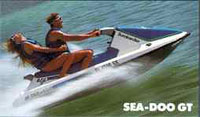
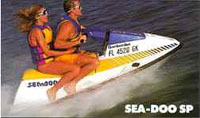
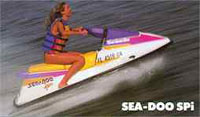
1992 Sea-Doo Models
In 1992, Sea-Doo completely revamped their 587 power plant for all models. The yellow 587 engine is replaced with an upgraded white 587 design by Rotax. The yellow 587 engine is completely phased out in 1992. The SP models remain unchanged for 1992. The XP is once again upgraded with the introduction of manual trim. The three-passenger drops its GT badge and is replaced by the letters GTS. Strakes were added to the GTS hull for better stability and handling.
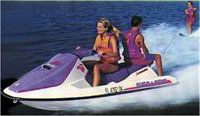
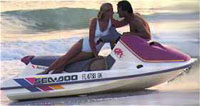
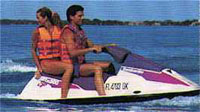
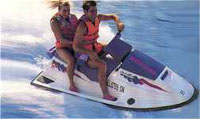
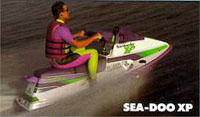
1993 Sea-Doo Models
In 1993, the XP continued to be upgraded from the prior year. Changes to the XP included a larger 657 Rotax engine with a single carb and a more robust bronze pump. The XP also received some cosmetic updates with a more modern rounded styling as well as electric trim. This year marks the start of a proliferation of models. The SPX was introduced and was by in large the same as the 1992 XP except with different colors. Sea-Doo continued to market the SPX until 1999. The SPX continued to be the prior year’s XP until 1998.
The SPI was introduced an upgrade to the SP which was the same as the 1992 SP. The upgrades included a stainless impeller and a different exhaust pipe. Both the SP and SPI were powered by a single-carb 587 engine.
In addition to the SPI and SPX models introduced in 1993, the GTX was also added to the product offering. The GTX was basically the same as the 1992 GTI, which remained unchanged this year. The GTX did incorporate a dual carb design and included a fuel gauge in addition to some other enhanced features. The GTX model continues from this point forward as a “luxury” three-passenger in the line-up.
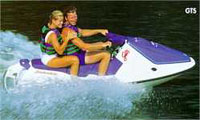
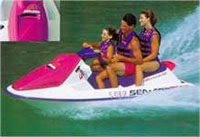
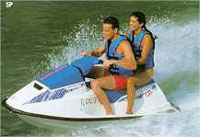
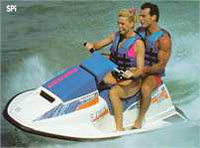
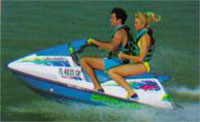
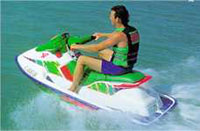
1994 Sea-Doo Models
Sea-Doo introduces the 657X engine inside the XP, increasing horsepower by an additional 5HP by changing timing and carbs. They also introduced an upgraded XP branded the XPI model that had the 657X engine but with twin carbs. Continuing with the trend in 1993, the SPX is the same as the prior year's XP. The SP, SPI, and GTS remain fundamentally unchanged from 1993, still incorporating the 587 engine with a single carb. The GTX model was upgraded to include the more powerful 657 engine, rearview mirrors, and a complete gauge package.






1995 Sea-Doo Models
In 1995, SeaDoo introduced two new engines. The 717 and 787 are commonly referred to as the 720 and 800 respectively. The 720 engine was rated at 85 horsepower and the 800 was rated at 110 horsepower. While both were Rotax rotary valve engines, the 800 incorporated variable exhaust port valves. SeaDoo branded this feature R.A.V.E. (Rotax Automatic Variable Exhaust) valves. The 800 engines were paired with a tuned variable water-injected expansion chamber and dual carbs.
The XP was completely overhauled this year. Major changes included the introduction of the X4 hull design, a larger 720 Rotax engine with single carb and adjustable trim tabs. In addition to the standard XP, an XP800 was introduced that incorporated the same features as the standard except it included the 800 power plant. Both XP models incorporated a new trim design that would continue to be used for many years.
The XP was completely overhauled this year. Major changes included the introduction of the X4 hull design, a larger 720 Rotax engine with single carb and adjustable trim tabs. In addition to the standard XP, an XP800 was introduced that incorporated the same features as the standard except it included the 800 power plant. Both XP models incorporated a new trim design that would continue to be used for many years.
The race-inspired X4 hull had significantly improved performance and handling over the prior design. The X4 hull design was one of the best-designed hulls of that time. The X4 stayed in the Sea-Doo lineup until 1999. To this day, the X4 hull is still favored by many.
The GTS, SP, and SPI are basically the same as in 1994. All utilized the 587 engine. The SPX is the same as the 1994 XP with a 657 engine. The GTX is upgraded with the 657X engine and an optional touring seat available.
Sea-Doo introduces the HX to compete with the Yamaha WaveBlaster. The HX included the 720 engine and a seat suspension system. They were designed for a single passenger and were a challenge to ride. The hull was narrow in design and required forward momentum in order to stay seated on the ski.








1996 Sea-Doo Models
In 1996 SeaDoo introduced a more sophisticated CDI and electrical control system that included the new DESS (Digitally Encoded Security System) feature. The new DESS security system was available on the GTX, XP, and a new model, the GSX. In 1996, the 657 engine is no longer available in any model. The new electrical control system allowed SeaDoo to also launch a new LCD information gauge which was included on the GTX and GSX models. While the new electrical controls system provided more capability, it did require that the safety lanyard be programmed to the electrical control system by a dealer with special software called BUDS. Read more about BUDS here. Only lanyards programmed to the electrical control system would start the watercraft. If you lost your key, you needed to have a new one programmed by the dealer.
The new GSX was a two-passenger that was larger and more stable than the X4 hull although slower. It was much more comfortable in accommodating two passengers when compared to the “tippy” X4 hull. It included the 800 engine, electric trim, DESS feature, and LCD information gauge.
The GTX hull and top cap are completely redesigned for this year. It had an 800 engine, a larger front storage area, and a two-piece seat. It also included the new electrical control system and LCD information gauge.
The SP, SPI, and GTS are all similar to 1995. They all incorporate the 587 engine with a single carb. The XP is the same as the 1995 XPI with the 800 engine. The SPX has the same features as the 1995 XP with the 720 engine and the HX remains unchanged other than cosmetics.




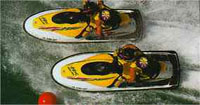

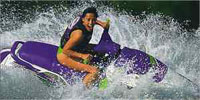

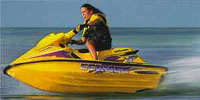
1997 Sea-Doo Models
In late 1997, a new 951cc RAVE valve engine, rated 135hp, was introduced in the GSX Limited. The 1997 951 engines were painted white. There were some issues with the white engine that were resolved in 1998. The 587 engine is dropped. The 720, 800, and 951 engines will be the last two-stroke engines, ultimately replaced by 4-strokes in 2007.
What didn’t change, other than graphics, in 1997 were the HX, GTX, and GSX (non-Limited). The SP is upgraded to the 720 engine and the SPX is the same as the 1996 XP with the 800 engine.
The GSX platform introduced in 1996 is utilized to provide two lower-priced, less-featured models, the GS and GSI. The GS and GSI both have the 720 engine with a single carb. The GS is the base model of the three and does not include trim and only includes a fuel gauge. The GSI has the same features as the GSX, other than the smaller engine.
The 1996 GTI is relabeled as a GTS in 1997, representing the base model three-passenger. The GTI is positioned as the mid-tier three passenger and has the same hull as the GTX, but it came with a 720 engine and did not include the LCD information display gauge.
A brand new designed XP is offered in 1997. This 1997 XP was a drastic change in design and riding characteristics. Prior to this, the XP hull designs were considered a “lean-out” design. With the introduction of this hull, that changed to a “lean-in” design. The engine was moved forward under the hood which significantly moved the balance point of the hull. The seat design was similar to a motorcycle rather than a traditional PWC. The seat design was born out of the HX. The seat included an adjustable shock absorber mounted at the rear and a pivot mount at the front, allowing the seat to move up and down with the passenger. Due to an additional 90 pounds, the power-to-weight ratio was lower than the 1996 XP which hurt acceleration. However, the new hull was faster on the top end.



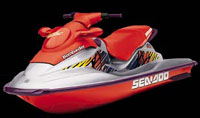






1998 Sea-Doo Models
In 1998, the white 947 engine is revised to address some reliability issues and is now painted silver. In addition, an 800 RFI (Real Fuel Injection) engine is added to the GTX. This is the first fuel-injected engine for SeaDoo and provides cleaner emissions to address environmental standards and also improves fuel economy. The horsepower rating remains the same as the carbureted 800 at 110hp.
The XP, GSX, and GTX are both updated with the silver 947 engine and are designated Limited. The GTX RFI is the same as the GTX Limited except it has the 800 RFI engine. Other than the engine changes they remain basically the same as in 1997.
The SP, GS, GTS, and GTI models are the same as the prior year other than graphics. While the SPX stays the same as in 1997 some weight was removed to make it lighter. This makes the SPX the fastest X4 hull to date. The HX is no longer available.












1999 Sea-Doo Models
The 1999 lineup has very few changes from 1998. The SPX gains a few pounds back that it lost in 1998. This is the last year for the X4 hull and the SPX. The GS, GTS, GTI, GSX Limited, GTX Limited, GTX RFI, and XP Limited all remain the same as in 1998 except for the graphics and colors. SeaDoo does introduce a GSX RFI. It is the same as the GSX Limited, but with the RFI 800 engine and different colors.









2000 Sea-Doo Models
In 2000, a new DI (Direct Injection) 947 engine is introduced. As with the 800 RFI version, the 947 DI has the same 135 horsepower rating of the 947 carbureted engine, but it has improved emissions and fuel economy.
New for 2000 is an RX model which was available in two versions, a carbureted 947 and DI 947. The RX platform was used for the building blocks of the RXP 4-Stroke introduced in 2004. The RX model was a larger two-passenger hull compared to previous skis and was quite a bit heavier. It included trim and a full gauge package on both versions.
Also new for 2000 is the largest PWC in production, the LRV. This SeaDoo was massive and could seat four. It even included lockers for storage. SeaDoo launched this craft to compete against the Yamaha SUV series. The LRV was discontinued four years later due to poor sales. The LRV was equipped with the 947 engine and had all the features of the GTX Limited.
The GS, GTS, GTI, GTX, GTX RFI, GSX RFI, and XP are unchanged other than the word Limited is dropped from the models with 947 engines, and the word Millennium is used on several models. The SPX is eliminated bringing an end to the X4 hull.










2001 Sea-Doo Models
In 2001, there is basically no change to most of the models. No modifications to any of the engines or any new significant features were introduced. Most models were offered in two colors, probably as a way to compensate for the lack of new models. There is a new GTS which is basically the same as the GTI but with fewer features. The RXX was introduced in 2001 as a race version of the RX. It was a 947-carbureted engine with performance upgrades. Reportedly it was the fastest stock to this point in time. They were only produced in limited quantities.
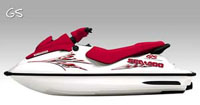
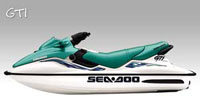

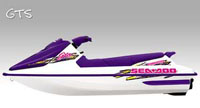

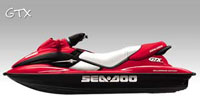

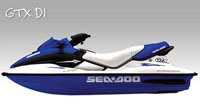
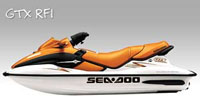

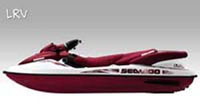

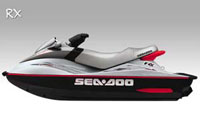

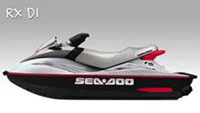

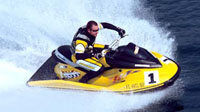

2002 Sea-Doo Models
In 2002, SeaDoo introduces its first 4-stroke engine branded 4-TEC. It is a 1494cc Rotax three-cylinder engine that was naturally aspirated generating 155 horsepower. With the 4-TEC comes a completely new engine management system incorporating a separate engine control unit (ECU) and MPEM. The 4-TEC engine ultimately becomes the only engine platform in the future as the 2-strokes become phase out over the next 5 years.
SeaDoo also introduces the OPAS system (Off Power Assisted Steering) which provides steering capability through the deployment of two rear rudders connected to the steering assembly. Thereby providing some steering without solely relying on the jet thrust and steering exit nozzle. OPAS is offered on three new models, the GTI LE, GTX 4-TEC, and the GTX DI.
The GTX, GTI, GTX RFI, RX, RX DI, and XP remain the same as in 2001. The LRV is upgraded with the 947 DI engine.
There is a new hull and top cap this year for some of the three passenger models. The new hull and top cap are used on the GTX DI, GTX 4-TEC, and GTI LE. It has better stability and a large engine compartment to accommodate the larger 4-Stroke engines. It also includes a new seat design providing stadium-type seating for the rear passenger and a new hood and sealed non-removable front storage compartment. The GTX 4-TEC tops the scales at 785 pounds and 155hp. Of particular note, is SeaDoo 4-TECs are of a closed cooling design.










2003 Sea-Doo Models
In 2003, SeaDoo significantly increases the horsepower of the 4-TEC power plant with the addition of a supercharger on two models, the GTX 4-TEC Supercharged and the GTX Limited Supercharged both with 185hp. While both these models are heavy at over 750 pounds, the power-to-weight ratio is much higher than any previous SeaDoo, resulting in a very solid performance. The GTX-4-TEC remains in the lineup with 155 horsepower, for the most part, unchanged from 2002.
The XP is upgraded with a 951 DI engine as is LRV. There is also a new GTI LE RFI in the GTI series with the 800 RFI engine initially introduced in 1998 GTX RFI. The GTI and GTI LE are the only models with the 720 engine and basically are unchanged from 2002. The RX DI remains unchanged other than color.









2004 Sea-Doo Models
In 2004, the RXP is introduced with an MSRP of $8899. The two-passenger RXP is rated at 215hp with a dry weight of 790 pounds. It utilizes the same 1494cc 4-TEC base engine, but with a redesigned, faster-spinning supercharger compared to the 185hp models introduced in 2003. The RXP is a rocket ship off the line and pulls hard to just shy of 70mph. Clearly, the RXP is not for the timid. The RXP hull and top cap shares many similarities with the RX DI, which is no longer available in 2004. The RXP provides a solid cost-to-performance ratio.
Of the eight models available in 2004, four of them are 4-strokes, the three GTX models, and the new RXP. SeaDoo continues to seed its product line with 4-strokes until 2008 when 2-Strokes are completely phased out.
The GTX 4-TEC, Supercharged and Limited Supercharged, as well as the GTI, GTI LE, GTI LE RFI, and XP DI reflect little change from 2003.
A new GTI RFI model is introduced in 2004. Both the GTI and GTI RFI are base model three-passengers with no mirrors and minimal analog gauges. The RFI version was introduced to address emission restrictions in certain regions.
The WAKE, a new specialty model is introduced and targeted at the wakeboarding market. It is basically the same as the GTX 4-TEC. It has the same 155hp non-supercharged 4-TEC but includes a retractable tow pylon and removable wakeboard racks and special graphics.
While the redesigned supercharger provided 30 more horsepower for the RXP, it did have a major design weakness. The supercharger utilized ceramic clutch washers which were prone to fail. The ceramic washers were designed to allow slip between the driveshaft and supercharger impeller wheel. Ceramic is a very good material for heat dissipation, but very brittle and tends to shatter when it fails in this application. With the supercharger spinning over 35,000 RPMs, a ceramic supercharger clutch washer failure results in fragments of ceramic material propagating throughout the engine. This can cause a complete teardown of the engine in the worst cases and at a minimum, replacement, and cleaning of the filters and oil. Should you own a 2004 to 2007 it is highly recommended that you have the ceramic clutch washers replaced with metal. Seadoo changed the clutch washer design in 2008 to address this issue. Read more about Superchargers here.









2005 Sea-Doo Models
In 2005, the long lineage of the XP comes to an end as the XP is eliminated. The three models of the GTX (4-TEC, 4-TEC Supercharged, and 4-TEC Limited Supercharged) are not changed much in 2005, other than the GTX 4-TEC Limited Supercharged increases to 215hp. Similarly, the GTI, GTI LE, and GTI LE RFI are not changed much from the prior year models.
The RXT is introduced as a three-passenger version of the RXP with the same 215hp power plant. It weighs in at 869 pounds, compared to the RXP weight of 790 pounds. The extra 79 pounds is attributed to the larger hull design. Even with the extra 79 pounds the RXT only gives up a little top-end speed and hole shot to the RXP. Where it outperforms the RXP is in rough water. The larger hull stays hooked up much better than the RXP. In rough water, the RXP might be a little faster than the RSP depending on conditions and passengers.
The 3D is introduced in 2005. This is a love-it-or-hate-it model. We have had two, and my kids called it a “fat man’s” stand-up, kind of hurtful. It was a unique model in that it had five riding modes: kart, knee, stand-up, stand-up fixed handle, and motorcycle. These five modes were configured by transforming the handlebar to unfold a motorcycle seat or adding riding accessories to the handle pole or pad area. The 3D came in two models, the base and the premium. The premium came equipped with the 800 RFI engine and the motorcycle seat. The kart, stand-up fixed handle pole, and knee modes required purchasing these accessories. The base model did not come with a motorcycle seat as standard, but it was available as an accessory purchase. Also, the base model did not have a fuel gauge, just a low fuel warning light.









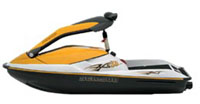
2006 Sea-Doo Models
In 2006, the 2-Stroke GTI series models are dropped and a new GTI platform is introduced. Two models are launched in 2006 in the new platform, the GTI and GTI SE models. The hull now used in the GTI series is a composite material as opposed to fiberglass. Up until now, all SeaDoos utilized fiberglass in the hull design. This is a significant manufacturing and design process change for BRP. Both new GTIs had a 4-TEC 130 horsepower engine. It was the same 1494cc platform and design as the naturally aspirated 155hp power plant, just tuned to 130 horsepower. The GTI SE included a speedometer, mirrors, and a boarding ladder. The GTI did not.
There was minimal change to the RXP, RXT, WAKE, GTX, GTS SC, and GTX Limited. Although the word, 4-TEC, was dropped from the GTX model names. The 3D remains in the lineup but trades its 2004 800 RFI engine for the 947 DI.
Under the hood, the electronic control system and ECU start to change. Now the LCD information gauge is married to the ECU. This means to replace the gauge requires a trip to the dealer to marry the two. Without the gauge being married to the ECU the Doo will not start. Read more about Gauge Clusters here.
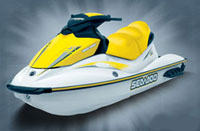
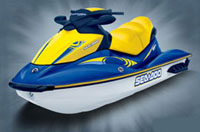
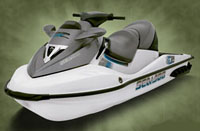
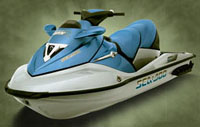
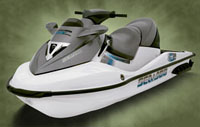
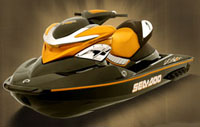
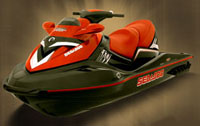
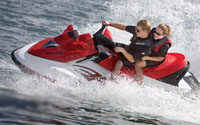
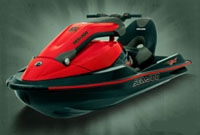
2007 Sea-Doo Models
In 2007, there were few obvious changes to the lineup. The GTX Limited, GTX, RXP, RXT, GTI SE, GTI, 3D and Wake remain basically the same as in 2006. The RXP and RXT get a redesigned top cap with repositioned, wider handlebars that change the riding position. The result of these changes is a more comfortable riding position. The GTX Supercharged is dropped from the line in 2007.
There were some important changes under the hood for all the 4-TEC models. In 2007 the MPEM was eliminated from the electronic control system and its functions were incorporated into the ECU. Now there is simply an ECU and an electrical wiring and fuse panel. Read more about MPEMs & ECUs here.
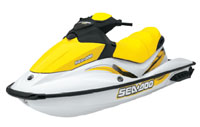
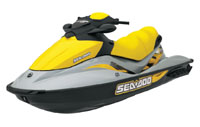
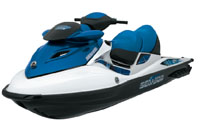
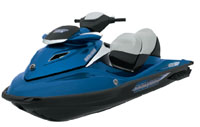
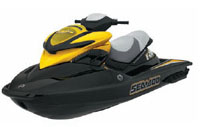


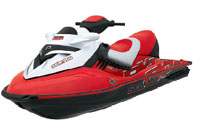
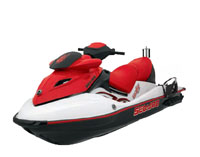
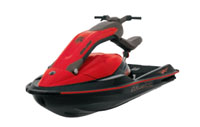
2008 Sea-Doo Models
In 2008, SeaDoo launches six new model variations while maintaining all the models from 2007. The flagship “X” versions of the RXP and RXT are introduced. They are both powered by a 255hp 1503 4-TEC engine. SeaDoo added an upgraded supercharger that produces more boost, a better-performing external intercooler and some ECU and fuel management changes to deliver an additional 40hp above the prior 215hp high water mark. The RXP-X and RXT-X both receive new style X-racing handlebars, seat, and traction mats. The most obviously visible change is the X-racing handlebars which have a skeleton metal frame and no wrap-around steering pad. The RXT-X also includes trim. The trim feature on a three-passenger really improves the overall riding characteristics. This is the first year trim is available in a three-passenger. The RXT-X and WAKE models now come with trim. The performance of the –X skis is incredible. 0 to 50 in 2.9 seconds. The acceleration of the –X models make it a challenge to hold on during a hard takeoff. Some of the most fun you will ever have in only 2.9 seconds. The fun does come with a price in this case. The MSRP for the RXP-X is $12,999 and the RXT-X is $13,299.
The 3D is eliminated from the lineup, making 2007 the last year for the 2-Stroke engine. All models now use the Rotax 1494cc 4-TEC engine.
The GTX series now has a GTX 215 version added to the GTX Limited and GTX 155. The GTX 215 is the same as the GTX 155 but with additional horsepower.
The RXP has a new naturally aspirated 155hp version, the traditional 215hp version, and the new RXP-X version. The RXT has only minor changes in 2008 with the exception of the RXT-X.
A GTI SE 130 is added to the GTI family. It is the same as the GTI SE 155 but with less horsepower aimed primarily at the rental market as was the GTI 130. In addition, all the GTI models are now the new composite hull design.
A new 215hp version of the WAKE is also introduced. In addition to the more horsepower compared to 2007, WAKE the WAKE 215 also has trim. Both WAKE models now come with a removable ballast system that allows the addition of 200 lbs of water is brought on board for wake generation.
Under the cover, SeaDoo redesigns the supercharger to eliminate the ceramic clutch washers in favor of metal clutch washers. This finally resolves the shattering ceramic clutch issue from 2004. However, the clutches still require maintenance and need to be replaced and checked at end of their service life. Depending on riding style, every 75-135 hours the washers should be inspected.
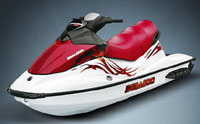
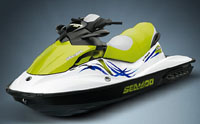
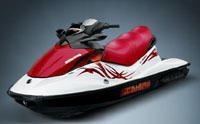
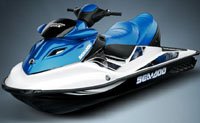
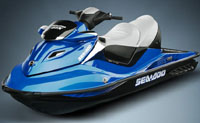
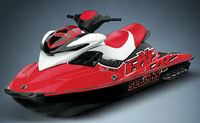
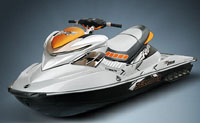
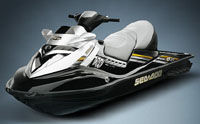
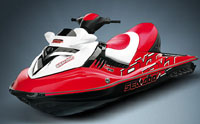
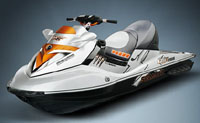
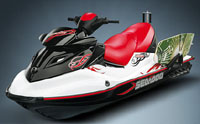
2009 Sea-Doo Models
In 2009, SeaDoo introduces the new iS (Intelligent Suspension) in the GTX and RXT. The new RXT iS and GTX Ltd iS are really incredible state-of-the-art watercraft with intelligent ride suspension, intelligent throttle, a new high-performance VTS system, and brakes. Both incorporate the 255hp power plant introduced on the X SeaDoos. Additionally, SeaDoo completely changed the ECU with the iS and also significantly increased the complexity of the subsystems in the ski.
With the iS design, the throttle iTC, the VTS trim, iBR brake, gauge cluster, and iS suspension controls all communication with the ECU as well as each other over SeaDoo’s CanBus system. BRP calls this new control system iControl. While this provides some real ‘wow’ factor in terms of features and handling, the repair costs of the much more complex components is a big concern. The iS are extremely expensive to repair due to the two-part top cap and highly expensive new electronics. While normally extended warranties are questionable, on the iS models it may make a lot of sense. The base price of the GTX iS was $16,499.
Other than the iS models there is little change in 2009 other than the WAKE 155, which is now a composite hull similar to the GTI line. Also, both WAKE models no longer have the ballast tanks as a standard feature in 2009.
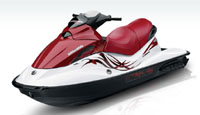
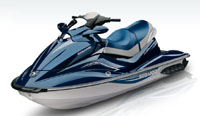
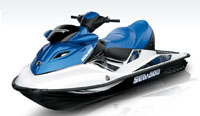
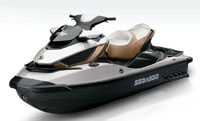
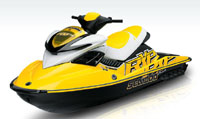
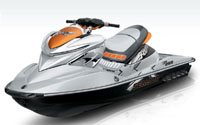
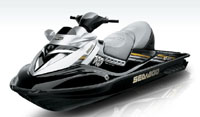
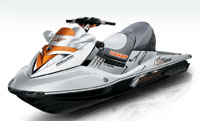
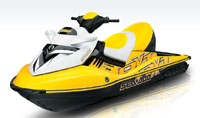
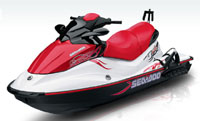
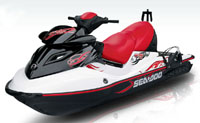
2010 Sea-Doo Models
In 2010, the lineup is really starting to migrate toward the iControl concept introduced on the iS Doo’s last year. In addition, the RXT-X, RXT iS and GTX iS get an extra 5hp bringing their power plants to 260hp. The GTIs and the RXP-X changed very little from last year other than new colors. All GTX’s and RXT’s, as well as the Wake 215, now incorporate iControl which includes iTC (fly-by-wire throttle), iBR (brakes), and the new high-performance VTS. The iS Models also incorporate intelligent suspension control.
The iControl improvements do not come for free. The RXP-X in 2009 and 2010 maintained the same MSRP of $13.699, and neither incorporated the new iControl system. However, the 2009 RXT 215 (without iControl) MSRP was $11,999, compared to the 2010 RXT 215 (with iControl) with an MSRP of $12,999. Price went up $1000 or 8% in one year due to the iControl system. Of note is the replacement part cost with the iControl system. The VTS function is incorporated into the iBR brake with the iControl system. The list price for the iBR/VTS replacement part alone is $900 compared to the old-style VTS replacement part list price of $300. Progress clearly comes with a price.
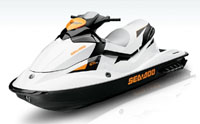
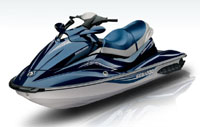
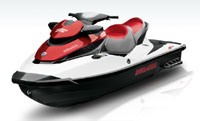
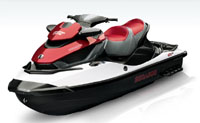
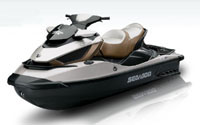
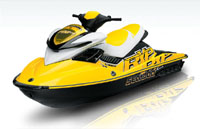
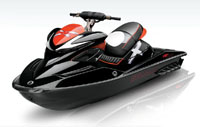
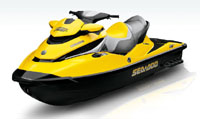
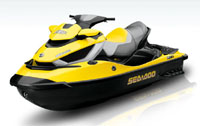
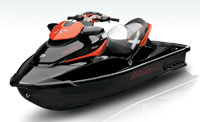
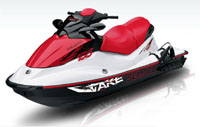
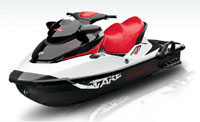
2011 Sea-Doo Models
In 2011, the GTI line is completely refreshed from last year. They now have the GTI SE 155 & 130, GTI LTD, and GTI 130, with the introduction of the new GTI line and updates to the Wake 155. Only the RXP-X 255 and GTS Pro do not incorporate the iControl system. With the exception of the RXP-X and GTS Pro, SeaDoos now incorporate iTC (fly-by wire) and the iBR (brake) features. In 2012, SeaDoo will incorporate iControl across the whole lineup.
As a point of reference from 2010, the MSRP of the 2011 RXP-X (without iControl) is $13,499 compared to $13,699 in 2010. The RXT-X MSRP in 2011 is $14,399 compared to $14,199 in 2010. Long gone are the days of the $5000 personal watercraft.
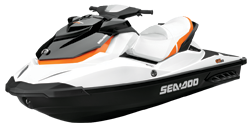

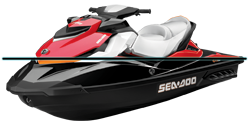

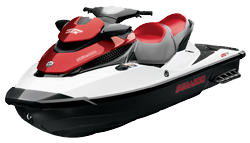
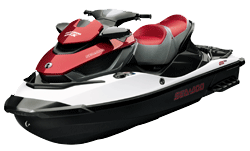
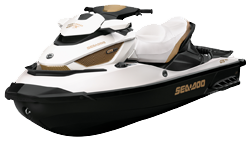
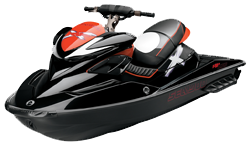
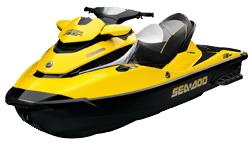
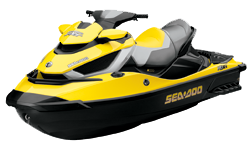
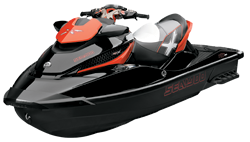
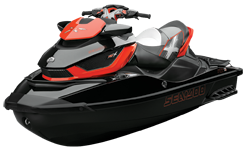
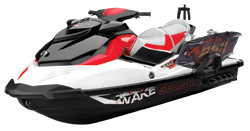
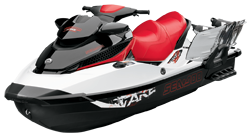
2012 Sea-Doo Models
In 2012, iControl is now a standard feature on every SeaDoo. But the big news for 2012 is the all-new RXP-X with the new T3 Hull, 260 HP, and the Ergolock system that allows the passengers to lock into the seat position for much more aggressive riding. The RXP-X is loaded with new features such as angled foot wells, adjustable sponsons, front splash deflector, boost gauge, and 5 position trim tabs. The RXT-X aS 260, with the exception of the T3 hull and Ergolock system, has the same features as the RXP-X. The RXP-X is now rated at 260hp.
In addition, we have a new GTR 215 muscle craft on the GTI LFI composite hull platform targeted at the performance passenger with a lower price and a few fewer features, as well as lighter weight than the RXT/P product line. Also new for this year is the GTX S 155, which is the same as the GTX 155 but includes adjustable suspension. The Wake models receive a new ski-based mode selection for 2012. SeaDoo also adds a 215HP model GTX iS to the lineup. The total model count is up to 15 from 14 in 2011.
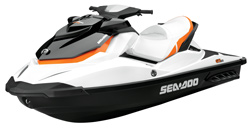
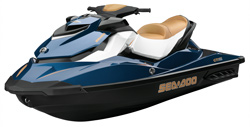
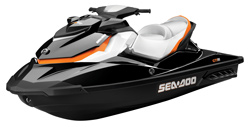
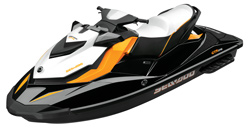
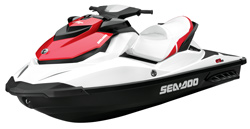
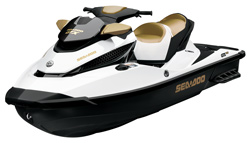
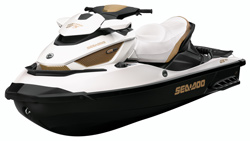
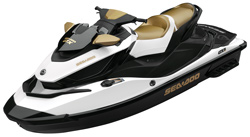
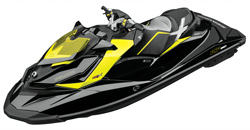
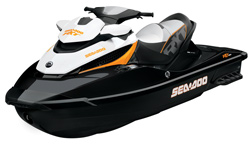
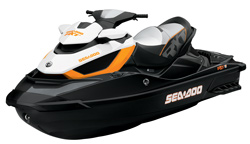
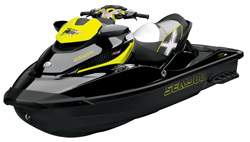
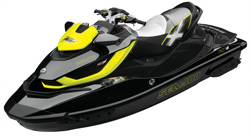
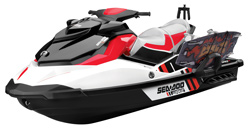
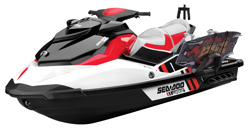
2013 Sea-Doo Models
In 2013, there is little change to the 2012 model offers. The RXT iS 260 is eliminated from the lineup resulting in a model count of 14. Based on prior history, it’s likely there is something big in the works for 2014 or 2015. Years in which there has been minimal change result in big changes in the next year or two.

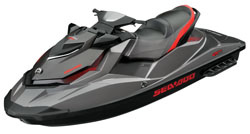
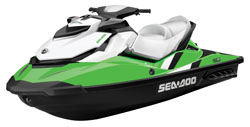
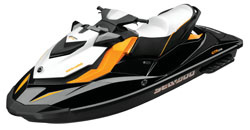

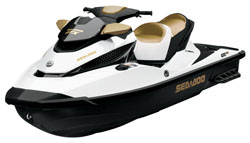
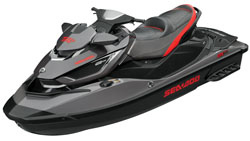


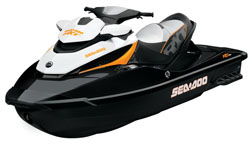
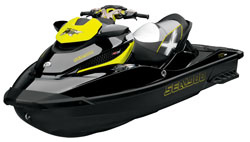
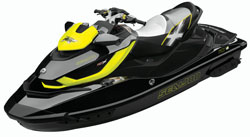
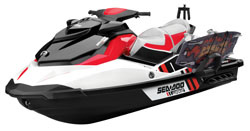
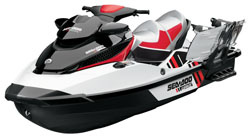
2014 Sea-Doo Models
With the introduction of the Spark in 2014, we are forced (happily) to retract our 2011 model year summary statement: “Long gone are the days of the $5000 personal watercraft”. Much has been written about the Spark and simply writing more of the same would be of little benefit. While the Spark’s value and features are impressive and will have a significant impact on the entire PWC industry, we will examine the Spark from a much different perspective in our 2014 model summary. The Punch line is; expect them to be scarce in 2014 and 2015 and for good reason from SeaDoo’s perspective. We have dedicated a separate page for the Spark Model Summary
As for the rest of the SeaDoo line, little has changed from 2013; although, there are some notable highlights. The GTX 215 from 2013 is replaced this year with a GTX 215 Limited version. The price of the 2013 GTX 215 was $13,299. However, the price of the 2014 GTX 215 Limited is $14,499. Unfortunately, the badge change to Limited does not result in incremental features other than preset trim positions. It is the same GTX 215 with a much higher price tag. You receive very little for the extra $1,200. On the other side of the ledger, the GTS 130 has a lower price of $8,199, $200 lower than the exact same model in 2013. The GTX price increase and GTS 130 price decrease could be important clues in understanding how SeaDoo is managing the Spark launch.
Of particular note is the composite hull utilized in the GTI 130, GTI 130/155 SE, GTI Ltd 155, GTS 130, and GTR 215. All of these models are noticeably heavier for 2014 when compared to 2013. They fatten up from 755 pounds dry weight to 790 lbs. Not much is said regarding this weight increase from SeaDoo. On the surface 35 pounds does not sound like that much, however, most, if not all of this increase was absorbed by the bare hull and is a significant increase in the basic composite hull weight. Expect all of the models to be slower with the added weight. The value-priced, go-fast GTR 215 will certainly suffer from the extra weight on the top end and acceleration.
Other than the composite hull weight increase and new badge for the GTX 215, the remainder of the line is the same as in 2013 except for the new Spark.
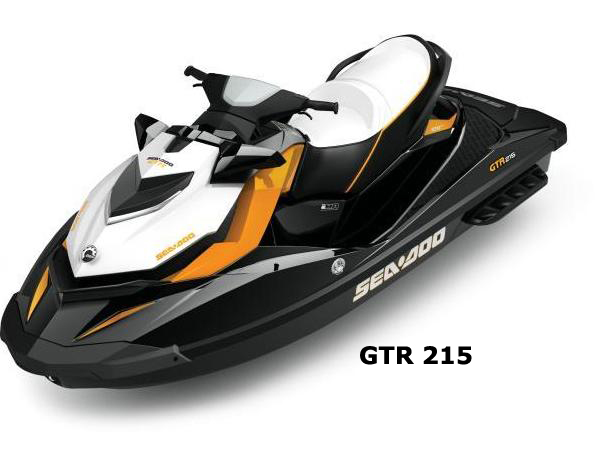
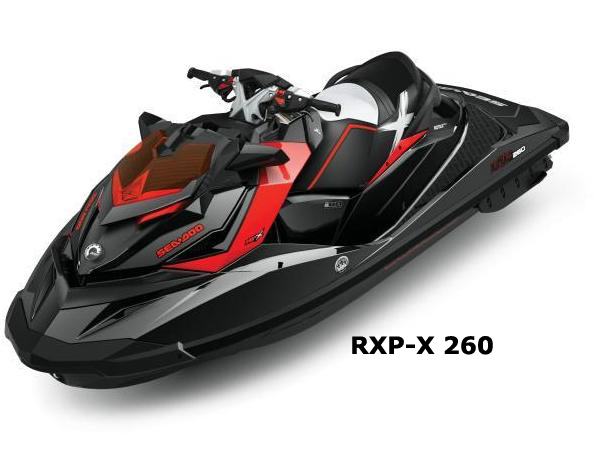
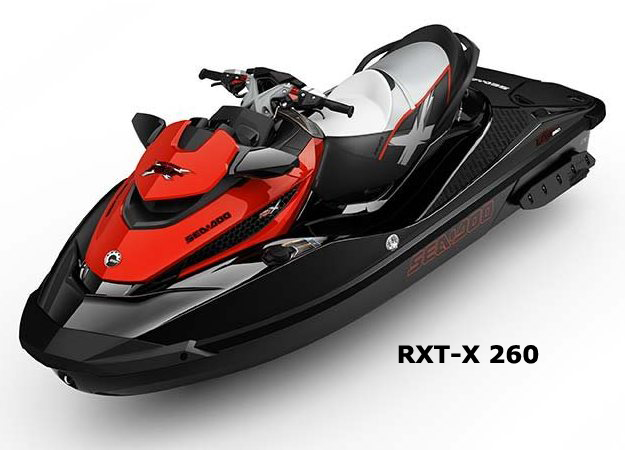
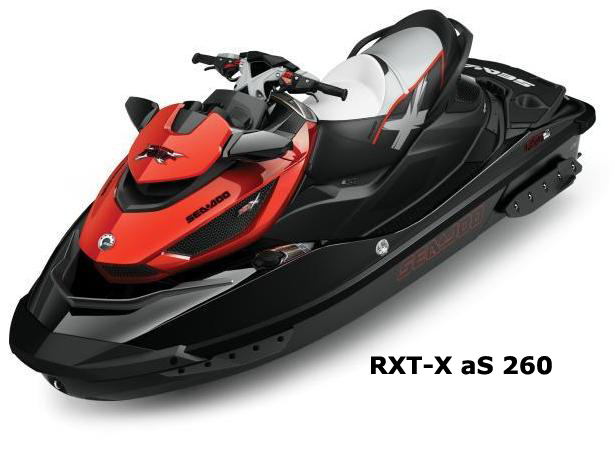
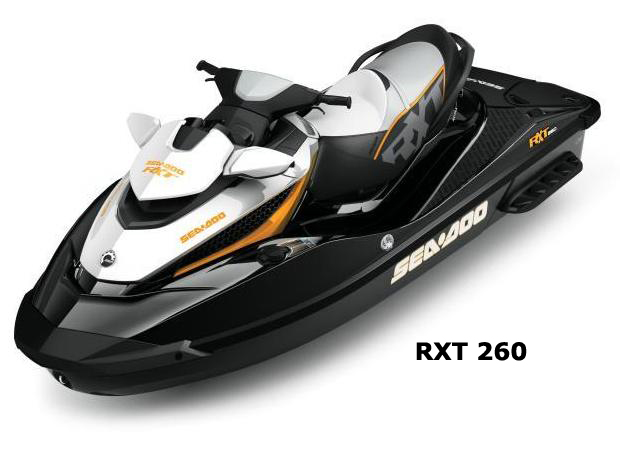
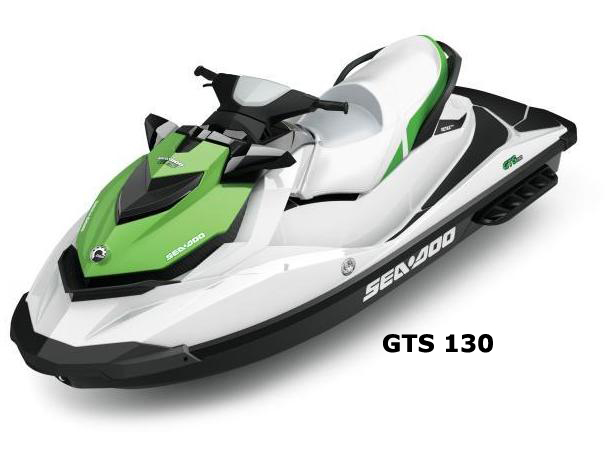
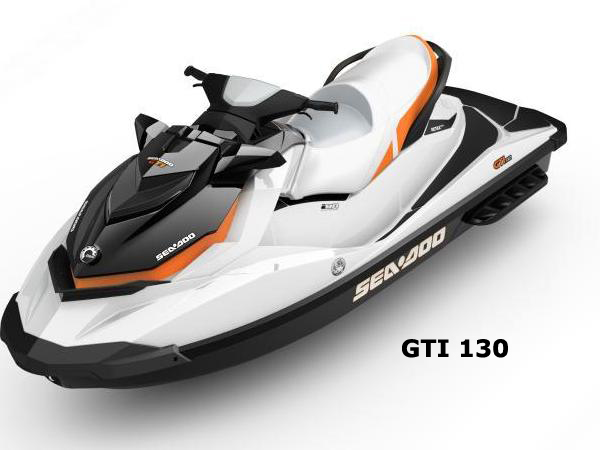
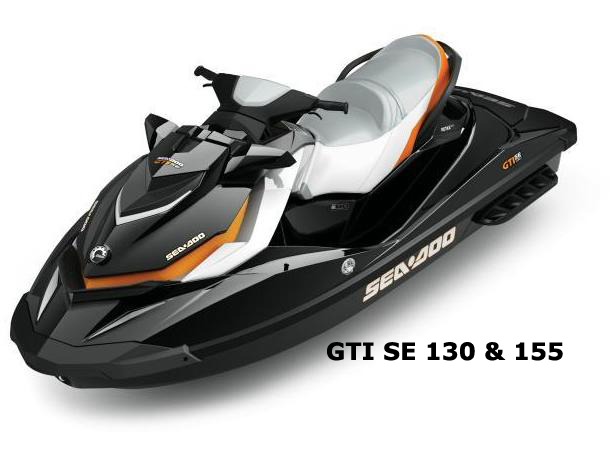
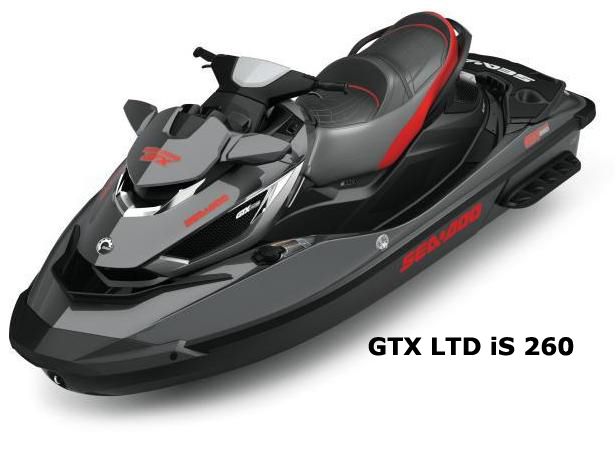
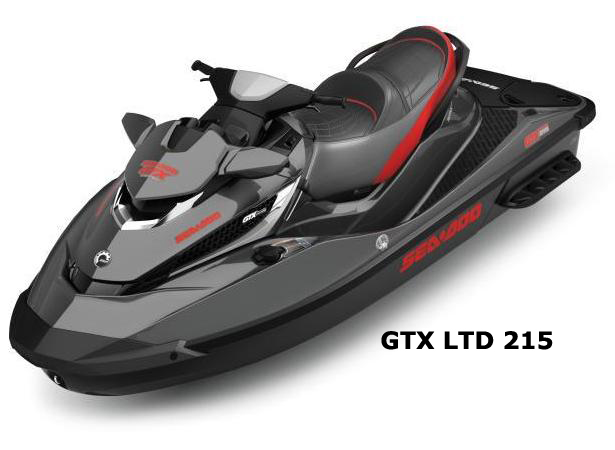
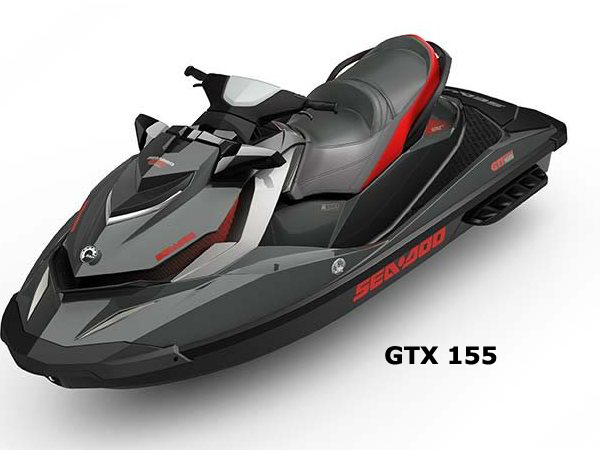
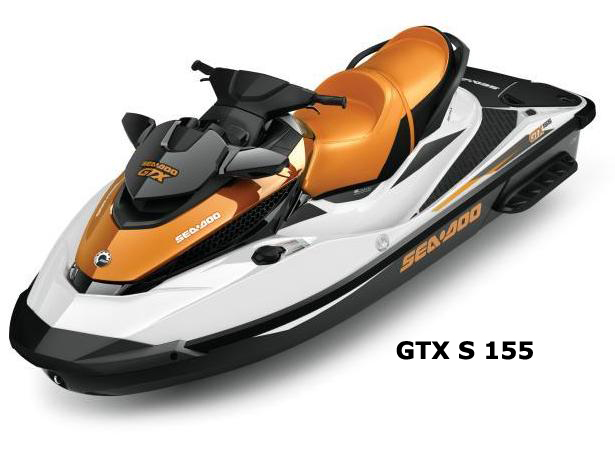
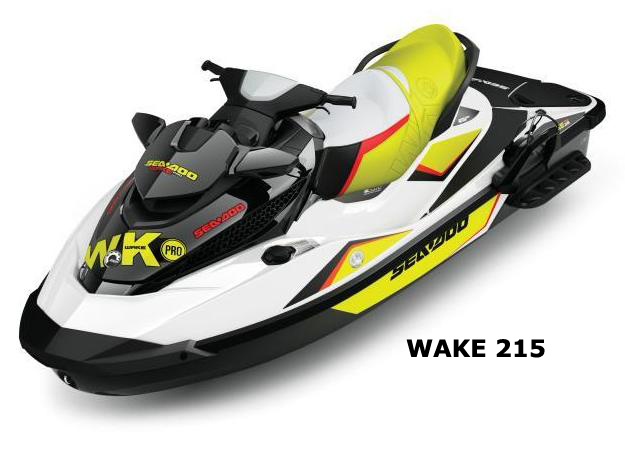
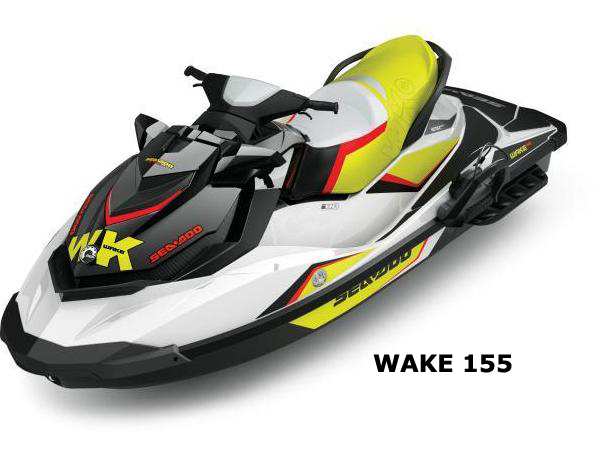
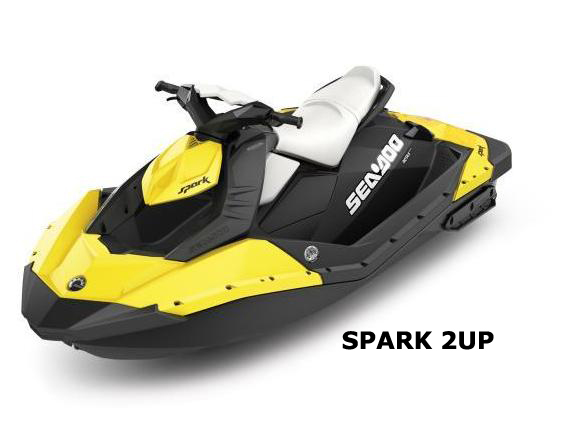
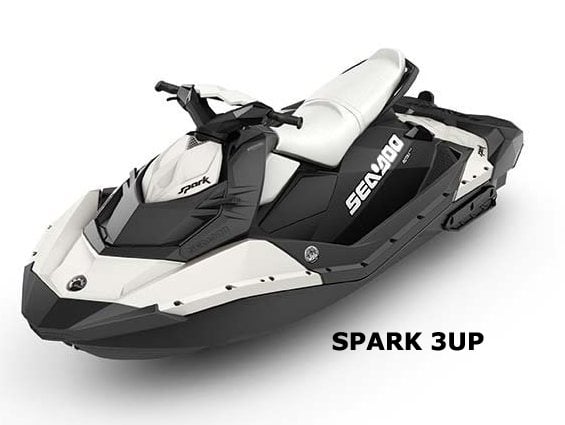
2015 Sea-Doo Models
Fundamentally, there have been no changes to the Sea-Doo product line in 2015. In a side-by-side comparison of every model’s specifications and features, it was rare to identify any difference between 2014 and 2015 models, other than colors. In short, the only notable changes were the deletion of the GTS Rental edition and the addition of new optional trim on both the Spark 2up and 3ups, and the conversion of the DESS security system to RF (Radio Frequency) technology. The old DESS security system design, at times, made it difficult to achieve a robust connection, frustrating riders with the lack of the two beeps until the key was jiggled or removed and re-installed. Hopefully, the new RF DESS technology will be an improvement. Spark Model Summary
As for pricing, we see a modest increase compared to 2014. Most models had a small price increase of $100-$200. Notable exceptions were the GTS 130 with a $400 MSRP price drop and the Spark basic 2up which remained at 2014 levels of $4999.
As for Seadoo’s manufacturing plan, in 2015 50% of all non-spark models will be produced in their Mexico facility on the same line as the Sparks. No specifics have been provided as to which models will transfer to Mexico and which models will remain in Canada. However, by the end of 2016, BRP plans to relocate all SeaDoo production to Mexico.
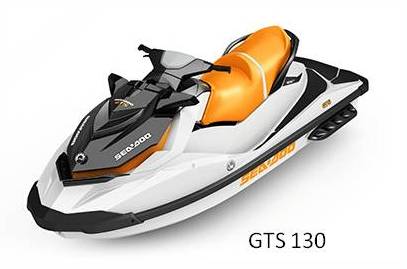
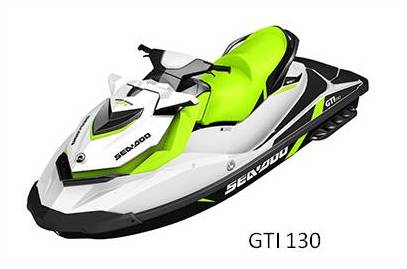

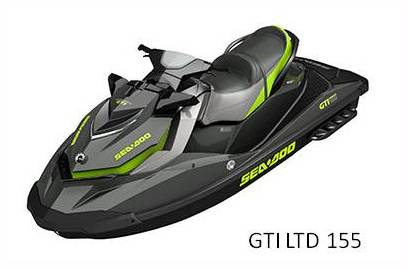
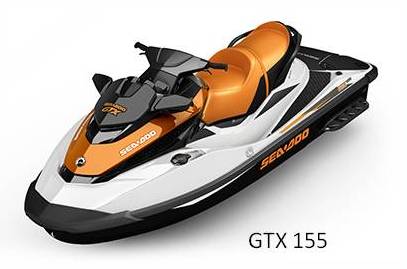
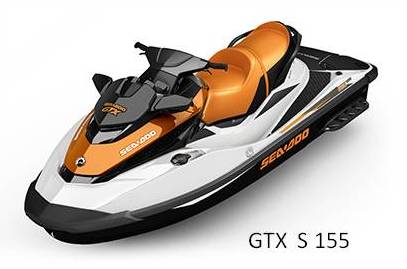
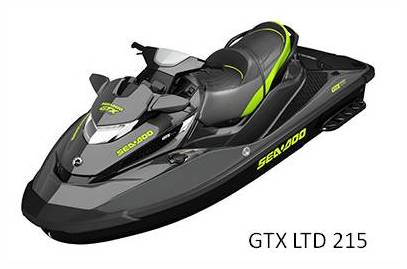
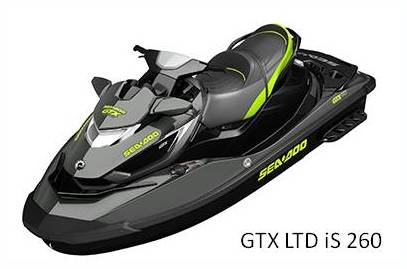
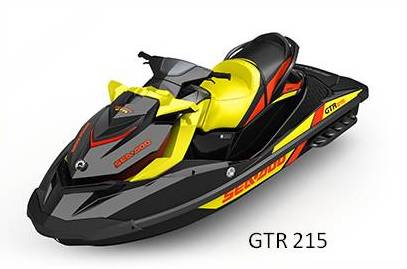
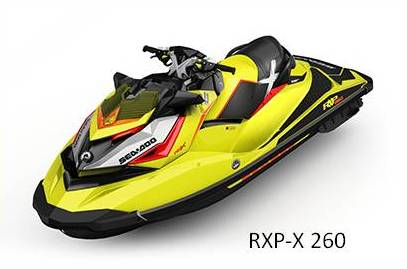
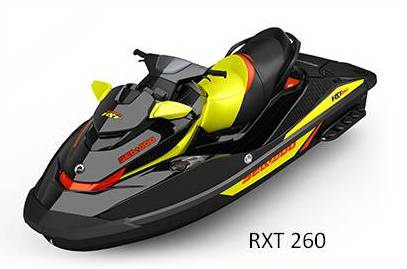
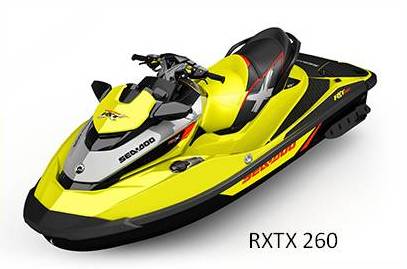
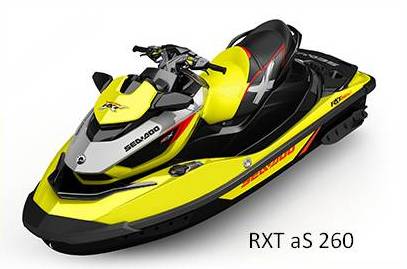
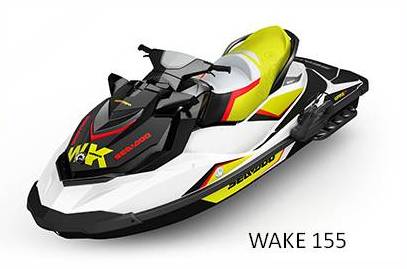
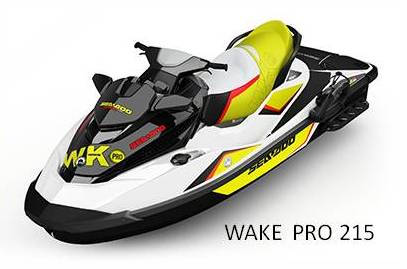
2016 Sea-Doo Models
2016 is an exciting year for Sea-Doo with the introduction of the all-new 300 horsepower 1630cc ACE engine which is available in the RXP-X, RXT-X, and GTX Limited models. The new ace motor boasts a longer stroke with more displacement, a new supercharger with more boost, a larger maintenance-free intercooler, larger fuel injectors, stronger forged pistons, and an additional heat exchanger for improved cooling over the 14-year-old 1503 motor. The only downside we can see is it requires a minimum of 91 octane fuel which will cost you more at the pump, but the extra power should be well worth it.
The RXP-X, RXTs, GTXs, and Wake Pro models got a new Ergolock seat which is more narrow than the older versions with knee pockets for a more comfortable ride, the GTX models also get a more dramatic stepped seat design. The RXT-X and RXP-X models get the full Ergolock system which includes the Ergolock racing seat, angled footwell wedges, and adjustable ergonomic steering (AES). All models with iBR (Intelligent Brake and Reverse system) will get the new second generation iBR that gives you 20% faster braking while all models get new integrated palm rests in the handle grips which should really help with making long rides more comfortable. The RXT, GTX, and Wake Pro models get much more storage space this year, a whopping 162 liters! All models get the new RF (Radio Frequency) DESS security key system this year which is a great improvement over the 20-year-old electrical contact design.
Price increases are reasonable this year, especially for models with the new 1630 power plant. Most non-1630 models went up between 50 and 200 dollars and the models with the new 1630 engine only went up 300. Spark Model Summary
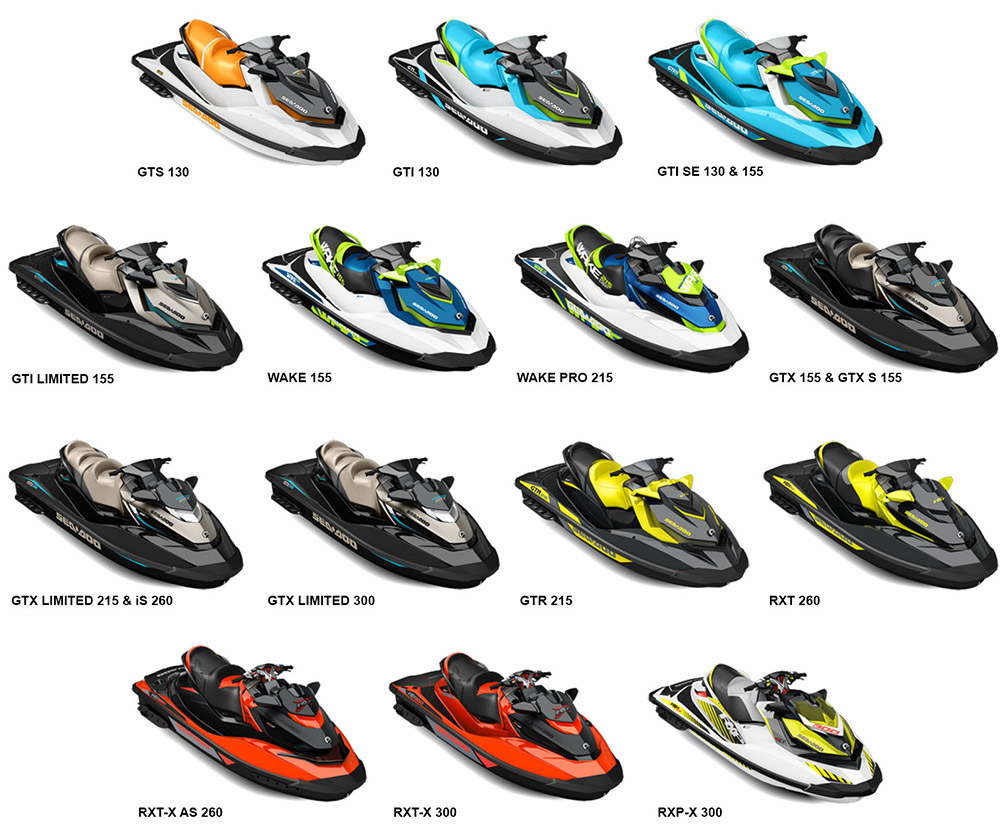
2017 Sea-Doo Models
For 2017, Sea-Doo has added new models, discontinued some, and tweaked almost everything for the better.
They created a new 1500 HO ACE 230 motor to replace the 215 4-Tec and made improvements to the 130, 155, and 260HP motors for more power and efficiency. The RXT & GTX Limited S 260 both get the new dynamically balanced “maintenance free” supercharger which they claim only needs to be inspected every 200 hours in severe conditions. Both models also receive the new external intercooler that offers a 75% better cooling capacity over the 215 HP version.
Sea-Doo also added the Wake Pro 230 and the all-new GTR-X-230 which is the most affordable X model; it’s designed after the RXP-X 2-Seater with a tough Thermofold finished upper deck construction. With the addition of the new models, they have discontinued the RXT-X aS 260, and the GTX Limited iS 260 is now called the GTX Limited S 260. Both the GTX S 155 and the GTX Limited S 260 get 5.5” of suspension travel with a manual pre-load adjustment under the seat for passenger weight adjustment.
Following the Spark’s lead, the GTS & GTI has received the Polytech hull & the 900 ACE HO motor which shaves off about 150 pounds. BRP claims even though 130HP models are now 90HP, they have the same 3 1/3 second 0-30 MPH speed as last year’s GTI SE 130, but tops out about 46 MPH which is 6 MPH less. The entire 2017 lineup utilizes a bolted hull and deck design with a gasket which will allow for full access to everything by removing the upper deck.
Considering all the improvements 2017 brought for hulls and motors; prices stayed within a hundred or so dollars of the same 2016 models except for the GTI and GTS models that received the 900 ACE motors this year. They saw a price decrease of between 300-500 dollars.
The Spark line also received an all-new model, see the Spark Model Summary for information. Spark Model Summary
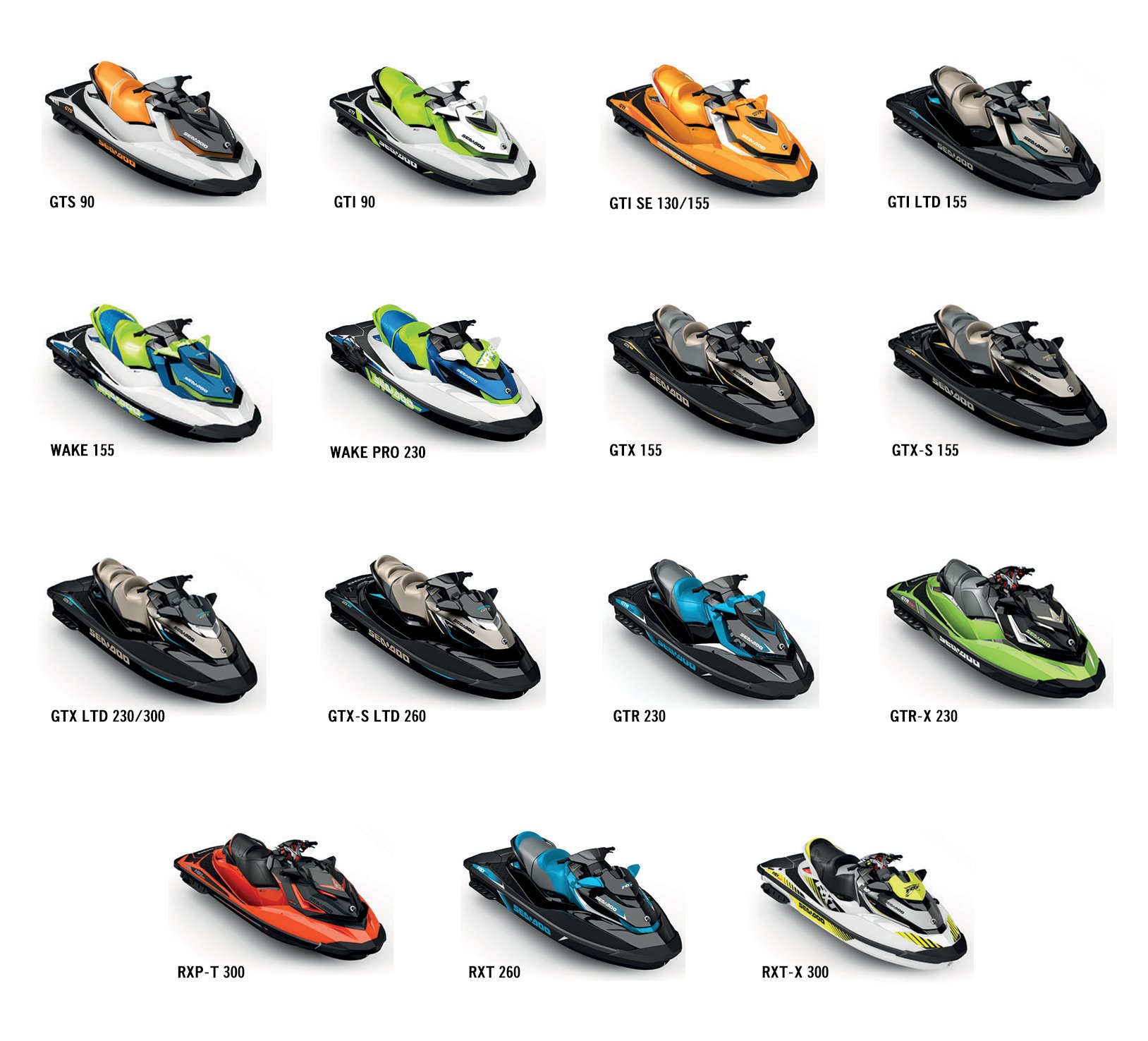
2018 Sea-Doo Models
Sea-Doo brought all kinds of changes for the 2018 models like a hull design, various engine improvements, launch control for the go-fast models, and even an integrated audio system.
One of the biggest changes is the introduction of the new ST3 hull for the GTX 155/230, GTX Limited 230/300 Wake Pro 230, RXT 230 & the RXT-X 300. The ST3 hull is constructed with BRP’s own CM-Tec (Closed Molded Technology), then covered in a multi-layer thermo-film finish that’s tougher than gel coat. The new hull platform offers much new performance & handling features like a new deep-V hull that’s 1.2 inches wider, fixed trim tabs, and new sponsons. It also brings new convenience features like an easy-access storage compartment, a clear glovebox lid with a USB charger, a wider boarding step, outside mounted drain and flush fittings, and a 16-gallon fuel tank.
Sea-Doo deleted the 1503 260 HO engine, the 900 ACE and HO engines were mostly unchanged. The 1500 HO ACE 230 / 1503 130 & 155 / 1630 ACE 300 all received various improvements like better cooling on all models; the 1503s received many of the improvements from the 1630 ACE engine.
The 100-watt integrated Bluetooth audio system is sure to be hit with customers. This fully waterproof system comes standard on the GTX Limited 230 and 300 models, the RXT, RXT-X, GTX & Wake Pro models are pre-wired for easy installation.
Prices stayed the same on some models while some went up a few hundred dollars compared to 2017; the new audio system option will cost you an additional $550.00.
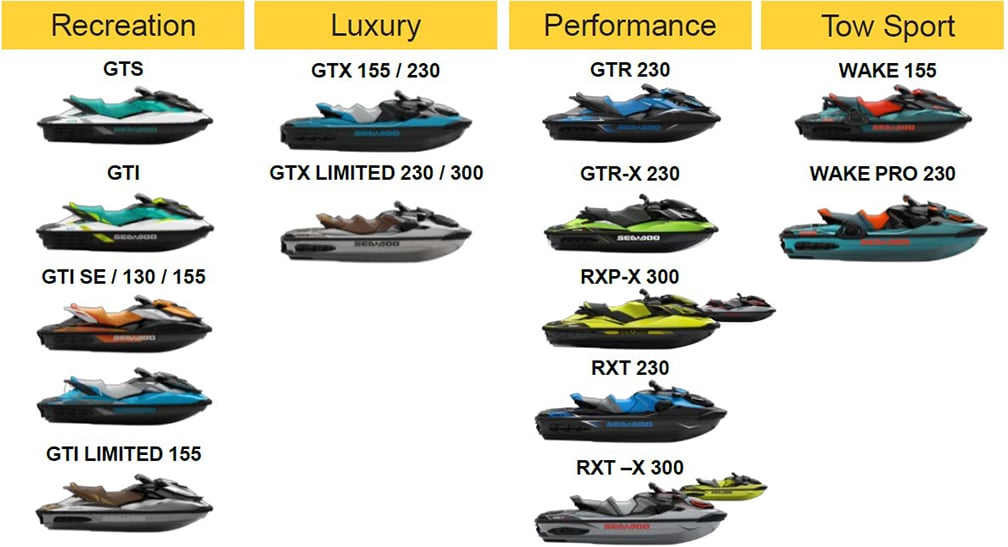
The Spark line also received an all-new model, see the Spark Model Summary for information. Spark Model Summary
2019 Sea-Doo Models
2019 brought some nice tweaks and changes to existing models and added an awesome new LinQ accessory line. They added a new GTI 130 Pro, but the most exciting is Sea-Doo just opened up an entirely new category for personal watercraft. Behold, the Fish Pro.
The all-new Fish Pro is based on the ultra-stable ST3 hull, it also has an insanely large 18.5-gallon fuel tank which is more than some pontoon boats have! All you’ll need is a pole and tackle when you hit the water, they pretty much thought of everything else you’ll need. It comes with a 6” Garmin Echomap Plus navigation/fishfinder with a transducer already installed, rod holders, and a giant quick detachable LinQ cooler with a lid-mounting cutting board. The extended rear boarding platform is almost a foot longer which allows room for an additional LinQ mount accessory. It’s also available with or without a sound system, if you want tunes it will cost you an additional $800.
The all-new GTI 130 Pro was mainly designed for the commercial rental market, it’s available with or without iBR braking technology. It’s proven 1503cc 130hp can easily be detuned to 99hp, has a heavy-duty driveline along with a beefed-up electrical system to better handle vibration and water intrusion.
The LinQ accessory line features a quick attach and release mounting system for many 2011 and newer models. Sea-Doo currently offers a 16L or a larger 51L cooler, a 4-gallon fuel caddy, a fishing rod holder, a retractable ski pylon, a 40L watertight bag, and a 19L cargo box. I’m sure there will be more accessories to come.
Other than color changes, there were other minor improvements.
The GTX, RXP, RXT & Fish Pro got a new backlit 7.6” customizable multi-function gauge that’s also used on some off-road models. It allows the customer to reset the maintenance reminder which is something the dealer had to do before. It also displays active fault codes to help troubleshoot problems, has an hour and trip meter, and displays everything else you need to know. Models with this gauge also get new easier-to-use handlebar switches.
The 900 ACE models got updated fuel injectors and most models received a newly updated jet pump seal design that will retrofit as a kit to older models.
2018-2019 Pricing changes were pretty typical with increases of $100-$500 per model.
The Fish Pro retails for $15,599 with a sound system or $14,799 without. The GTI 130 Pro will run you $11,599 with iBR or $10,399 without.
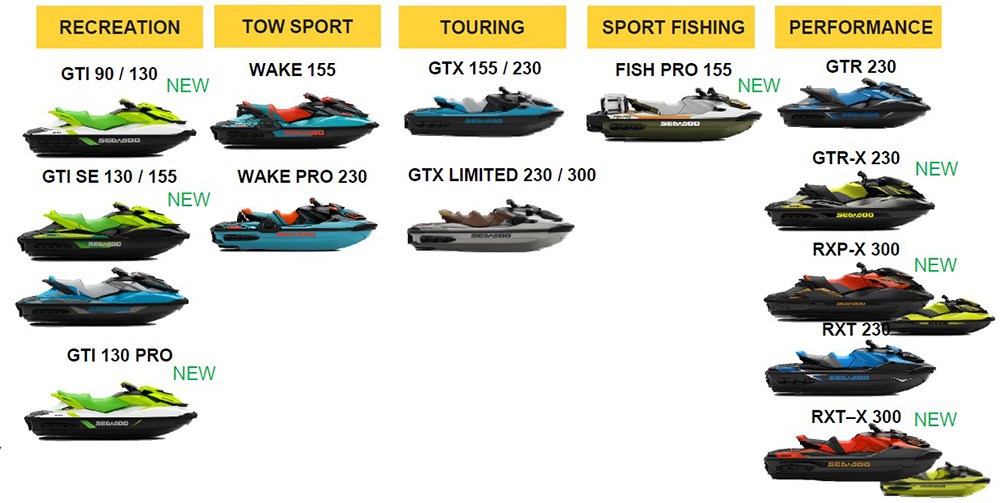
The Spark line also received an all-new model, see the Spark Model Summary for information. Spark Model Summary
2020 Sea-Doo Models
2020 brings a new hull platform, a new 170 HP motor, new gauges, and a few other surprises.
The all-new totally redesigned GTI hull platform brings some features and technology from higher-end models to the more affordable GTI family. The new hull is one inch wider and offers a lower center of gravity for the best stability possible by lowering the seats, handlebars, footwells, and front storage compartment. Sea-Doo has come a long way from those tippy 1996 XP models. It also gives you more storage including a watertight phone box. In addition to the GTI Line, the Wake 170 also received the new hull.
The new platform hull is made from Sea-Doo’s proprietary Polytech 2.0 material which is polypropylene mixed with fibers that proved to be more lightweight and scratch-resistant than fiberglass while still maintaining strength. Of course, the new hull accepts Sea-Doo’s LinQ quick attach/detach accessory system. The GTI is also now available in a 170 HP version which replaces the 155 HP motor.
The new 170 hp 163cc ACE powerplant is available in the GTI SE, GTX, and Wake, it replaces last year's 155 HP 1503cc ACE motor.
There’s also a new 4.5” digital display with a red/black readout for easy viewing in any light, it also makes the speed regulator and slow mode standard on GTI SE, GTR, and Wake models.
The RXT-X, Wake Pro 230, Fish Pro 170, and the entire GTX series all now have the enormous 18.5-gallon fuel tank for extended rides.
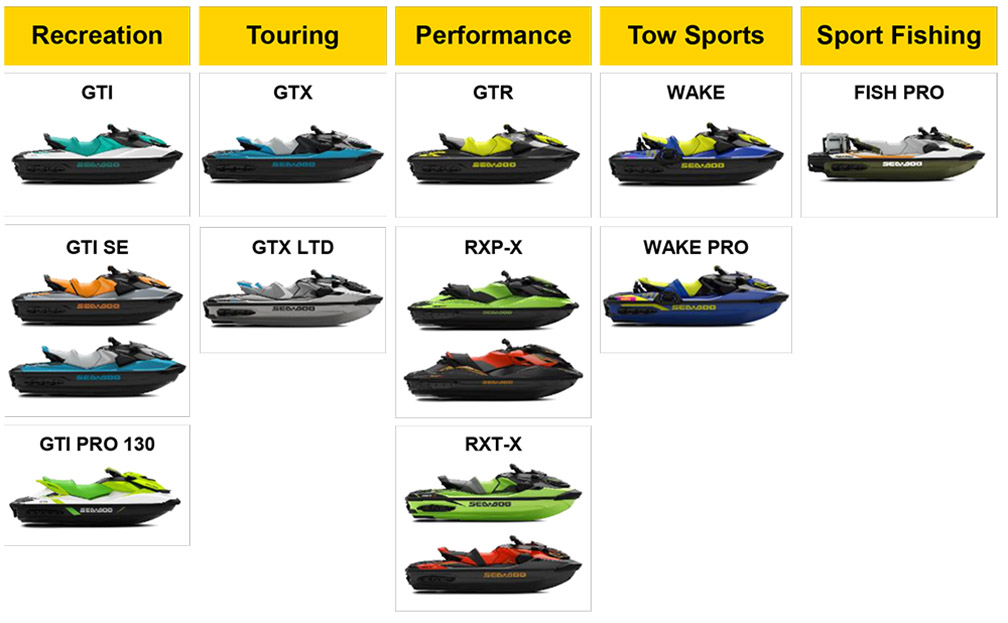
Click here to see the Spark Model Summary for information. Spark Model Summary
2021 Sea-Doo Models
2021 brought some awesome new performance improvements, some industry firsts, and a brand-new model.
The GTX Pro 130 is the new model for 2021, it’s primarily made for the rental industry. Rental skis rack up tons of hours while getting ridden hard and put away wet. This new model offers heavy-duty wear parts, the reliable 1630 ACE 130 engine & the stable fiberglass ST3 hull which is just what the rental industry has been asking for.
Industry firsts include the new Intelligent Debris Free Pump System (iDF). If you’ve ridden personal watercraft, you’ve probably sucked something into your pump which required getting under the boat and trying to dig whatever you sucked up in it. No more! With the new iDF system, just press the button on your handlebars and your pump backflushes anything stuck in the pump out of it. This new system comes standard on the Fish Pro 170 and the GTX Limited 300 and is an option on the GTX 170 and 230.
The other first is a 7.8 full-color LCD display which gives you easy-to-read access to maps & navigation, music, weather forecasts, and more.
The most exciting news is the completely redesigned RXP-X 300 model. It includes an all-new hull with a deep V design for precise tracking, a shark gill feature at the mid-hull for ultimate control at high speeds, and aggressive X-Sponsons for predictable and tight turning. It also received a newly designed ride plate and intake grate with a new polished stainless-steel impeller for refined dynamics and improved acceleration. Somehow, BRP also managed to shave off 67 pounds off this year’s model. All of these improvements add up to a 10% better power-to-weight ratio and a 7% improvement in the 0-60 mph speed over the 2020 model year.
Other models saw different color choices and the availability of a few new accessories.
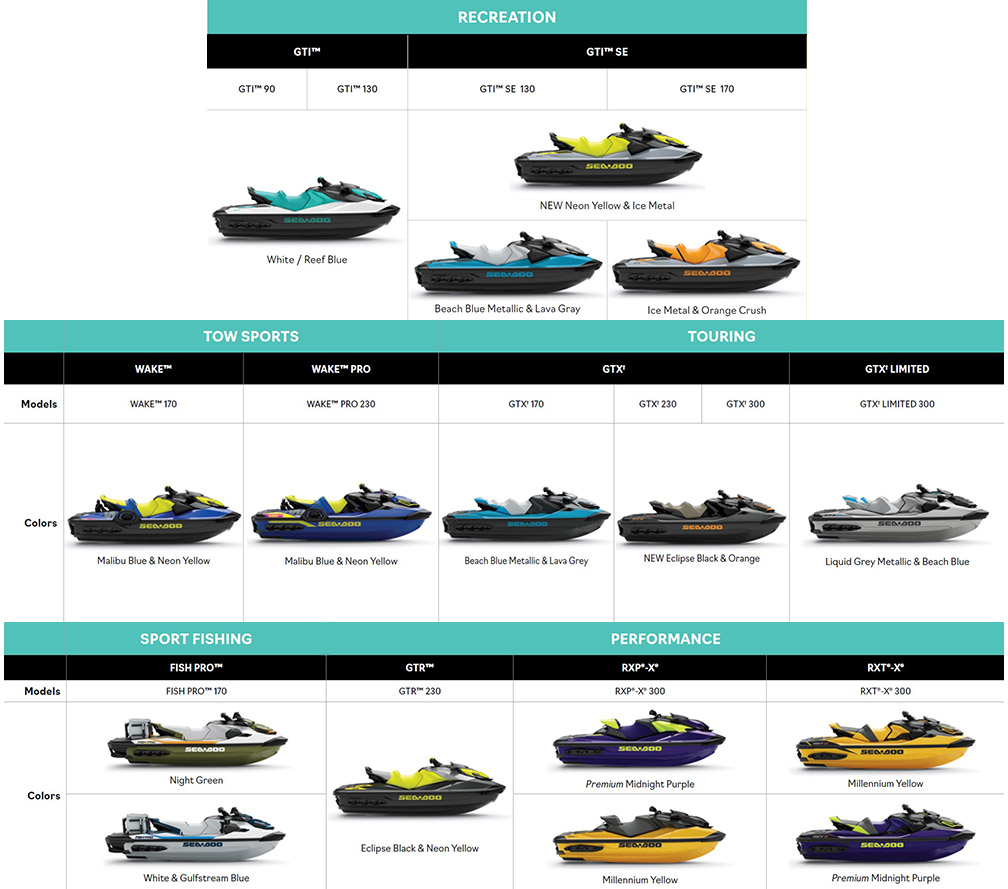
Click here to see the Spark Model Summary for information. Spark Model Summary
2022 Sea-Doo Models
2022 didn’t bring as many exciting changes as 2021, but it did bring a few new and exciting models.
2019 brought us a new segment in the personal watercraft industry, the FishPro 170. 2022 introduces the FishPro Scout 130 and the FishPro Trophy 170, both bring additional fishing accessories, enhanced comfort, and functionality along with extended technology. The FishPro Scout 130 is aimed at the occasional fisherman, whereas the FishPro Sport 170 and the FishPro Trophy 170 are more for the avid fisherman.
The new FishPro Scout 130 is from the same platform as the GTI SE 130 which gives you a nice mix of a nimble recreational riding ski and a stable fishing ski with many fishing accessories.
The new FishPro Trophy is from the same platform as the FishPro Sport 170 which gives you a stable and predictable ride for rougher water conditions while offering even more fishing accessories, enhanced comfort, and functionality along with even more technology.
Other models offered different color choices and new accessories.
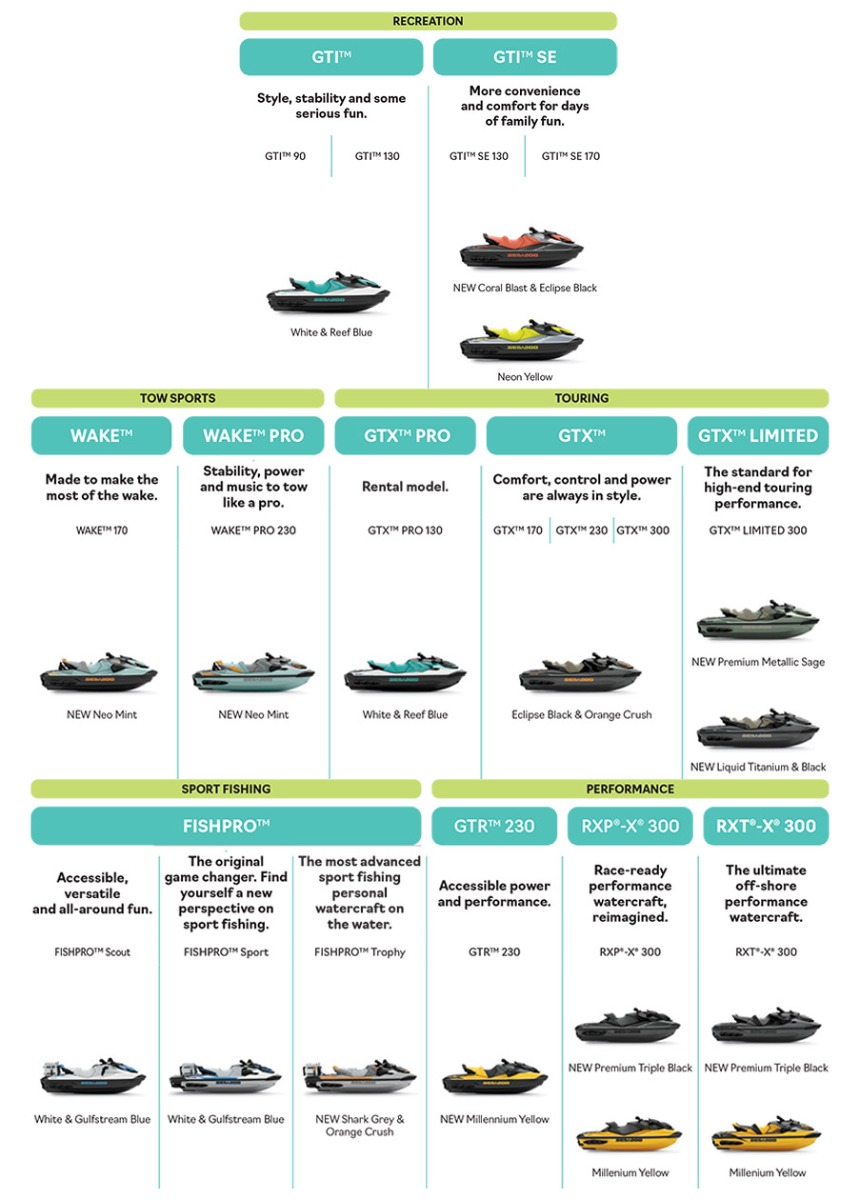
Click here to see the Spark Model Summary for information. Spark Model Summary
2023 Sea-Doo Models
2023 brings us 2 new packages that have been added to the lineup. A new performance package with the RXP-X APEX , and the new adventure segment with the explorer pro-170.
The new RXP-X Apex 300 offers bold new styling including carbon fiber hood and mirror covers with high-end laser-cut non-slip mats. It also includes a 3-position hydraulic steering dampener which connects to the new carbon fiber/fiberglass composite steering column, the combination of the two gives you the ultimate in racing steering technology.
The new Explorer Pro 170 adventure model offers unrivaled long-distance comfort and massive cargo capabilities. Some of the included long-range riding accessories are a removable polycarbonate vented windshield with a forward hinge in case the rider would come in contact with it, hull extensions that give you an extra 12” of deck space, a 26-gallon water-tight rear storage bag, 7-position rise handlebars, lateral footrests, a cup holder, and a massive 52.3 gallons of cargo capacity.
Some models also received a more efficient exhaust cooling system, a new oil cooler, and improvements to the IDF system. Other than that, some offer new color combinations.
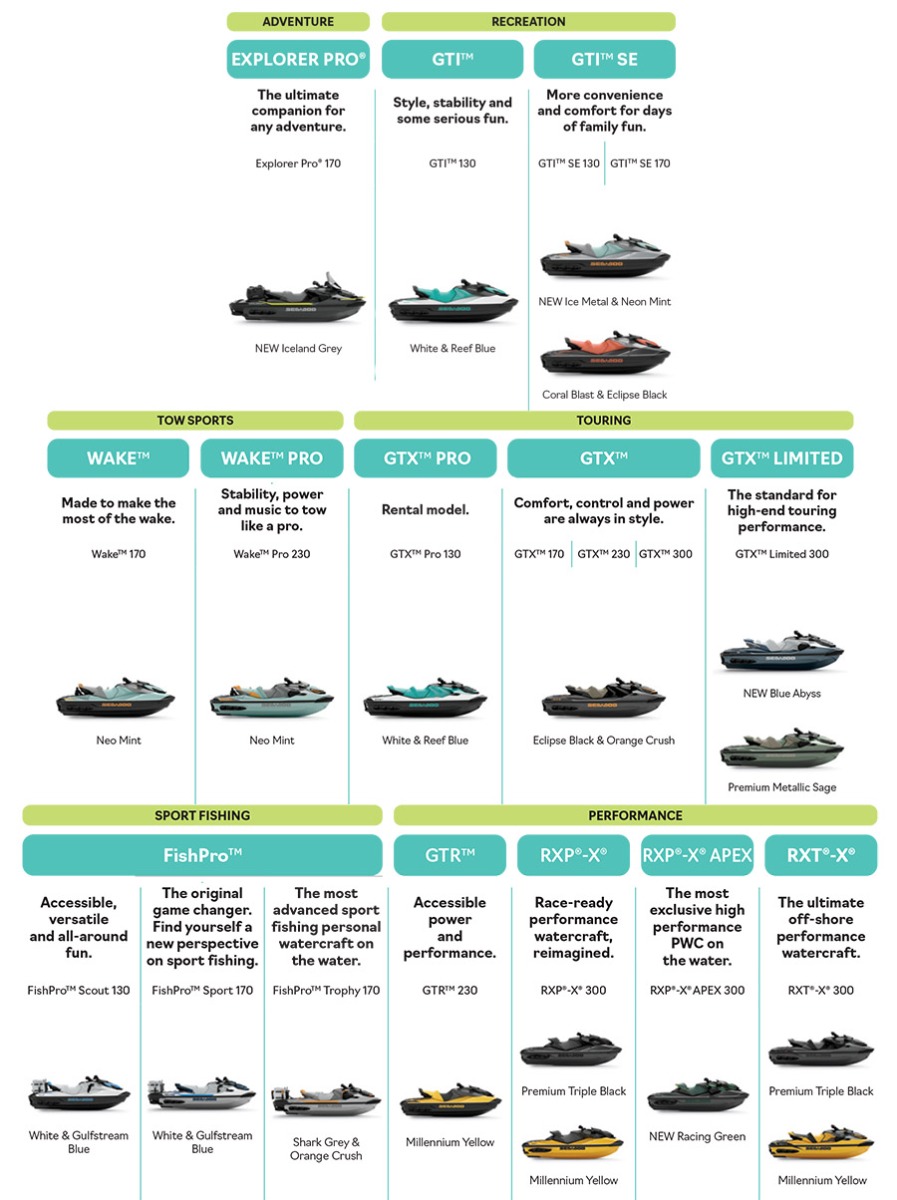
Click here to see the Spark Model Summary for information. Spark Model Summary
